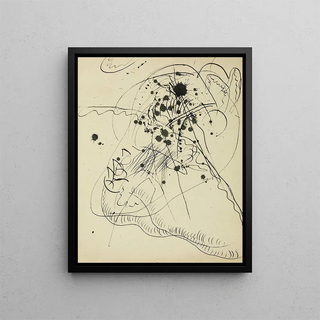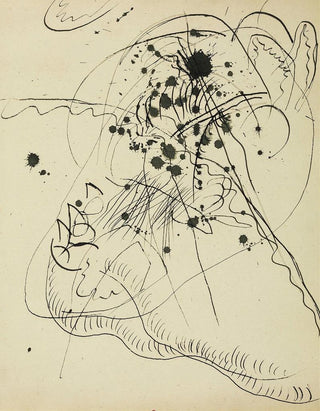Art print | Drawing after Blauer Fleck - Wassily Kandinsky


View from behind

Frame (optional)
In the vibrant universe of modern art, "Dessin d'après Blauer Fleck" by Wassily Kandinsky stands out for its ability to capture the very essence of human emotion through color and form. This artwork, which engages in a dialogue between abstraction and representation, invites the viewer to an inward exploration, to encounter their own feelings and reflections. Through this drawing, Kandinsky does not merely reproduce an external reality; he transcends its limits to offer a personal and poetic vision, where each stroke and nuance vibrates with a unique energy. The art print of this piece, a true homage to the artist's creativity, allows one to immerse themselves in this aesthetic experience, while paying tribute to the legacy of one of the pioneers of abstraction.
Style and uniqueness of the work
Kandinsky's style, characterized by an incessant search for harmony between color and form, is fully expressed in "Dessin d'après Blauer Fleck". The artwork features fluid, dynamic lines that seem to dance across the page, evoking a visual musicality. The colors, although sometimes dark, are always vibrant and loaded with meaning, creating a striking contrast that captures the eye and stimulates the imagination. As an art theorist, Kandinsky always advocated the idea that color could evoke emotions and sensations, and this drawing is a perfect illustration of that. Every element of the composition is carefully thought out to create an atmosphere that is both introspective and universal, where abstraction becomes a language in its own right, capable of transcending cultural and temporal barriers.
The artist and his influence
Wassily Kandinsky, an emblematic figure of modern art, is often regarded as the father of abstraction. Born in Russia, he managed to combine his cultural heritage with the influences of his time, notably Fauvism and Cubism. His spiritual quest through art led him to develop an innovative approach, where each artwork becomes an exploration of the relationships between art, music, and life. Kandinsky also played a key role in founding the Bauhaus, a movement that profoundly influenced architecture

Matte finish

View from behind

Frame (optional)
In the vibrant universe of modern art, "Dessin d'après Blauer Fleck" by Wassily Kandinsky stands out for its ability to capture the very essence of human emotion through color and form. This artwork, which engages in a dialogue between abstraction and representation, invites the viewer to an inward exploration, to encounter their own feelings and reflections. Through this drawing, Kandinsky does not merely reproduce an external reality; he transcends its limits to offer a personal and poetic vision, where each stroke and nuance vibrates with a unique energy. The art print of this piece, a true homage to the artist's creativity, allows one to immerse themselves in this aesthetic experience, while paying tribute to the legacy of one of the pioneers of abstraction.
Style and uniqueness of the work
Kandinsky's style, characterized by an incessant search for harmony between color and form, is fully expressed in "Dessin d'après Blauer Fleck". The artwork features fluid, dynamic lines that seem to dance across the page, evoking a visual musicality. The colors, although sometimes dark, are always vibrant and loaded with meaning, creating a striking contrast that captures the eye and stimulates the imagination. As an art theorist, Kandinsky always advocated the idea that color could evoke emotions and sensations, and this drawing is a perfect illustration of that. Every element of the composition is carefully thought out to create an atmosphere that is both introspective and universal, where abstraction becomes a language in its own right, capable of transcending cultural and temporal barriers.
The artist and his influence
Wassily Kandinsky, an emblematic figure of modern art, is often regarded as the father of abstraction. Born in Russia, he managed to combine his cultural heritage with the influences of his time, notably Fauvism and Cubism. His spiritual quest through art led him to develop an innovative approach, where each artwork becomes an exploration of the relationships between art, music, and life. Kandinsky also played a key role in founding the Bauhaus, a movement that profoundly influenced architecture






